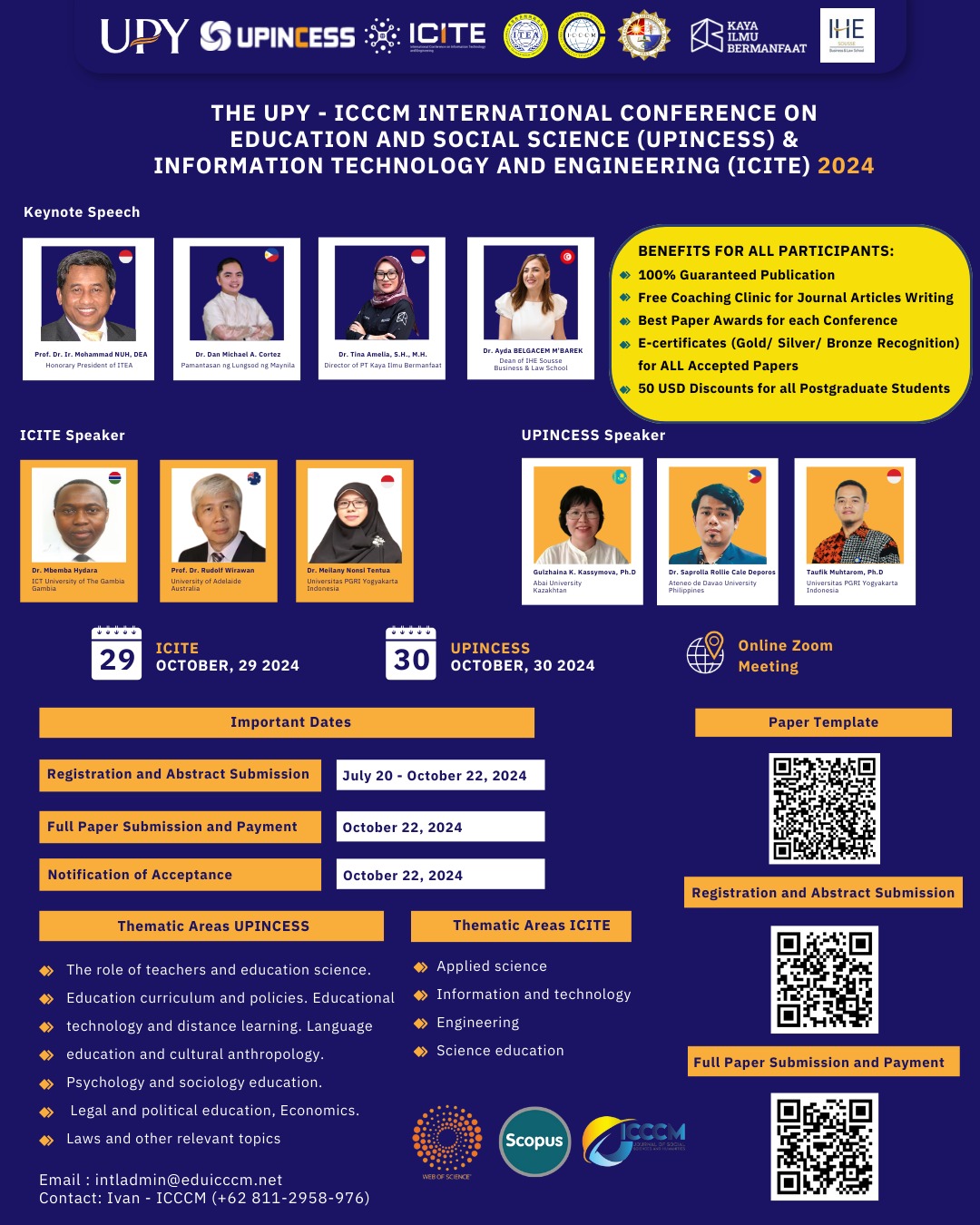Impact of Technological Integration on Urban High School Music Education Development Student in Nanchang, China
DOI:
https://doi.org/10.53797/icccmjssh.v4i1.3.2025Keywords:
Technological integration, music education, urban high schools, Nanchang, Diffusion of Innovations TheoryAbstract
This study examines the impact of technological integration on the development of urban high school music education in Nanchang, China, through the lens of Rogers' Diffusion of Innovations Theory. By focusing on the stages of knowledge, persuasion, decision-making, and implementation, the research explores how technology has influenced teaching practices, student engagement, and educational outcomes. The study employs a quantitative research design, utilizing a stratified random sample of 375 students from a total population of 16,000. Data collection is facilitated through online surveys via platforms like WeChat and email, ensuring accessibility and efficiency. The analysis, conducted using SPSS, identifies correlations between technological integration and the key stages of adoption, providing insights into the factors that drive or hinder its implementation in music education. The findings highlight both opportunities and challenges, including disparities in teacher preparedness, availability of resources, and cultural attitudes toward technology in music education. While technology has the potential to enhance creativity, collaboration, and accessibility, its integration is uneven across schools due to varying levels of institutional support and economic resources. The study underscores the importance of targeted professional development and infrastructure investment to bridge these gaps. This research contributes to the academic discourse on technological integration in education and offers practical recommendations for policymakers and educators aiming to modernize music education in urban settings. It also emphasizes the transformative potential of technology in fostering 21st-century skills such as digital literacy and creative problem-solving, ultimately enriching the educational landscape in Nanchang.
Downloads
References
Cirus, L., & Simonova, I. (2020, August). Rogers' Diffusion of Innovation Theory Applied on Primary Education: Case Study of Czech Teachers. In 2020 International Symposium on Educational Technology (ISET) (pp. 33-37). IEEE. https://doi.org/10.1109/ISET49818.2020.00017
Dai, D. D. (2021). Artificial intelligence technology assisted music teaching design. Scientific programming, 2021(1), 9141339.
Holliman, L. M. (2021). The status of technology integration in music classrooms and implications for technology training: a survey of K-12 music educators in four southeastern states (Doctoral dissertation, Auburn University).
Legi, H., Damanik, D., & Giban, Y. (2023). Transforming education through technological innovation in the face of the era of society 5.0. Educenter: Jurnal Ilmiah Pendidikan, 2(2), 102-108.
Liu, P., Cao, Y., & Wang, L. (2022). A Multimodal Fusion Online Music Education System for Universities. Computational Intelligence and Neuroscience, 2022(1), 6529110.
Liang, Q. (2020, December). Review of the Technology Application in Music Teaching and Learning. In 2020 International Conference on Information Science and Education (ICISE-IE) (pp. 311-314). IEEE.
Mawusi, E. F., Nkyi-Asamoah, J., & Kwadwo, K. E. (2020). Technology in Music Education: A survey of computer usage in teaching music in selected colleges of education in Ghana. Technology, 11(3), 126-151.
Menzli, L. J., Smirani, L. K., Boulahia, J. A., & Hadjouni, M. (2022). Investigation of open educational resources adoption in higher education using Rogers’ diffusion of innovation theory. Heliyon, 8(7).
Powell, B., Hewitt, D., Smith, G. D., Olesko, B., & Davis, V. (2020). Curricular change in collegiate programs: Toward a more inclusive music education. Visions of Research in Music Education, 35(1), 16.
Blaženka, B. S., & Martina, M. P. (2022). Digital competencies in the context of preschool music education. International journal of cognitive research in science, engineering and education, 10(2), 77-87.
Wang, Q., Saleh, S., & Yoshioka, Y. (2024). The Development and Evaluation of the Effects of Chinese Culture (Music) Module: Enhancing Chinese Culture Cognition, Learning Motivation, and Cross-Cultural Adaptability in Chinese Higher Vocational Colleges. International Journal of Humanities Education, 22(2).
Wang, C. (2023). Exploring Integration Mechanism of Music Instructional Design and Education Informatization. EAI Endorsed Transactions on Scalable Information Systems, 10(6).
Xue, H. (2023). A TPACK-Based Case Study of Music Technology Integration in Liberal Music Education at a Vocational College: Exploring Student Learning Outcomes and Engagement. International Journal of Education and Humanities, 8(3), 5-8.
Zhile, Z., & Nopparalai, J. (2024). Teaching Method of Choir for Non-Music Major Student in University in China. Journal of Roi Kaensarn Academi, 9(2), 754-764.
Zhou, Y. (2020, October). Research on music education model by using computer music technology in colleges. In Journal of Physics: Conference Series (Vol. 1624, No. 2, p. 022053). IOP Publishing.
Zhong, J. (2023). Music Information Technology as a Practical Direction for Developing the Innovative Abilities of Future Music Educators. Journal of Education and Educational Research, 4(3), 202-206.
Downloads
Published
How to Cite
Issue
Section
License
Copyright (c) 2025 Zhao Minghua, Adenan Ayob

This work is licensed under a Creative Commons Attribution-NonCommercial-ShareAlike 4.0 International License.




